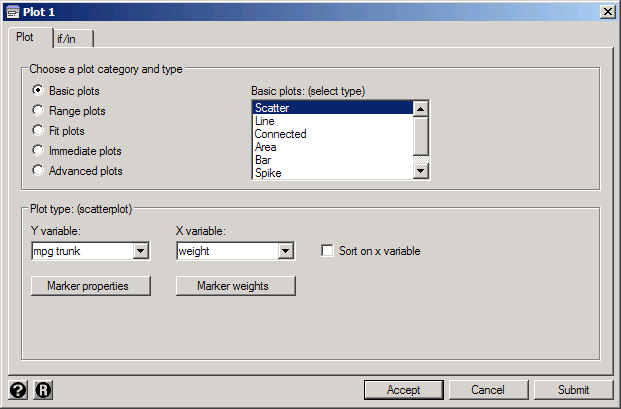

stat options include mean, median, percentiles, standard deviations, standard errors, first/last values, maximum/minimum etc. reshape long changes it back to the long format.Ĭollapse ( stat1) varlist1 ( stat2) varlist2…, by( group varlist) aggregates the dataset to summary statistics. | id semester gpaA attend~A gpaB attend~B | J variable (2 values) course -> (dropped) reshape wide gpa attendance, i(id semester) j(course) string converts the dataset from long to wide. In the wide format, each column represents variable values of lower levels. In the long format, variable values of the lower levels are grouped under values of a higher level. There are more observations in the long format and more variables in the wide format. Prog ses female socst.halfmean math.halfmean halfmean <- function(x) return(mean(x)/2)Ĭollapse2 <- summaryBy(socst + math ~ prog + ses + female, FUN=halfmean, data=hsb2) If we wish to summarize our data in a way that does not already exist as aįunction, we can write the function and then pass this to summaryBy.īelow, we write a quick function halfmean and then apply it to mathĪnd socst within each combination of prog, ses, and female. collapse1 <- summaryBy(socst + math ~ prog + ses + female, FUN=c(mean,sd), data=hsb2)

Standard deviation of several variables, and saving this as a new object. Prog and female and ses, calculating both the mean and We can easily make our collapse more complex, creating one observation for each combination of Using the collapse command to create aggregate data from individual-level data.

Hsb2 <- read.table("", header=T, sep=",") Memory Contrary to Stata, R returns a new dataset without destroying the. The default summary calculation is the mean, as indicated by the WeĬan start by collapsing the data by prog and calculating the mean of This may be useful for performing destructive operations such as collapse. At the end we included one example using function collap() from new package "collapse". This data management step can also be done in R using the summaryBy()Ĭommand in the "doBy" package. See our Stata Learning Module on collapse. Stata News Export tables to Excel On roundup of the best education on Consider the collapse command below. Some summary of the other variables at this level. Reducing the number of observations in your data, keeping one observation forĮach value or combination of values from one or more variables and calculating Using the collapse command to create aggregate data from individual-level data using frequency weights.Visit my website for more videos. Users of Stata are likely familiar with the concept of collapsing data:


 0 kommentar(er)
0 kommentar(er)
